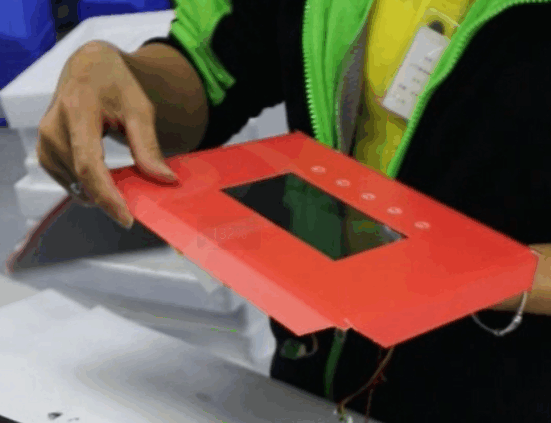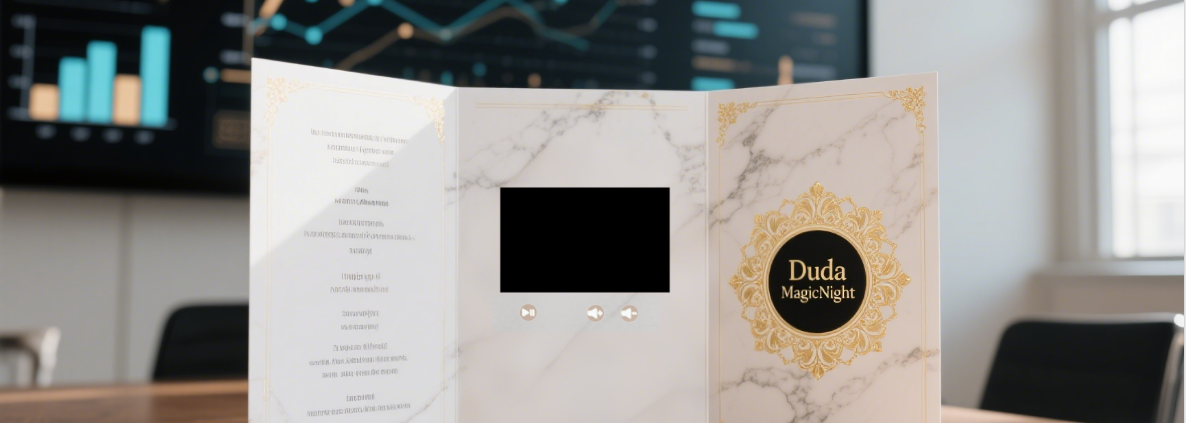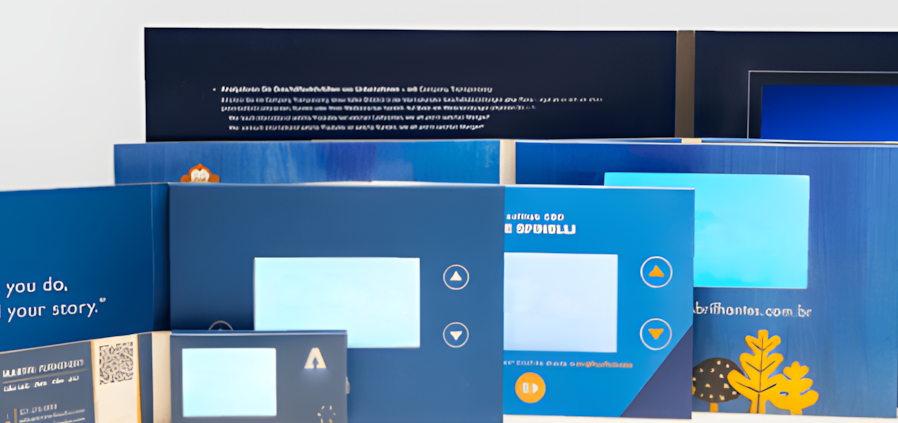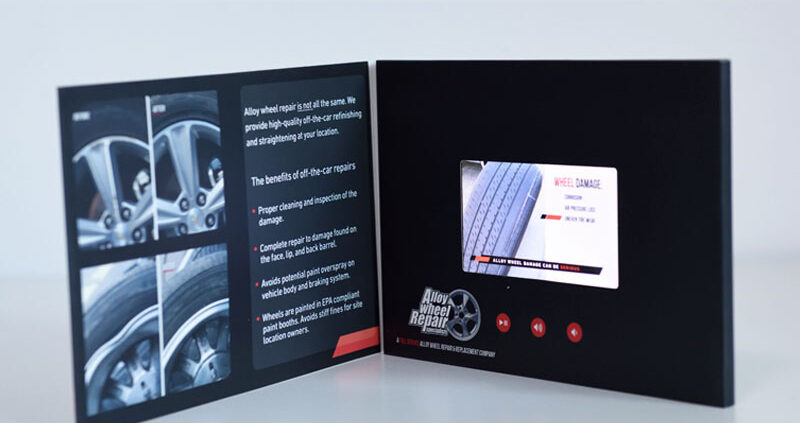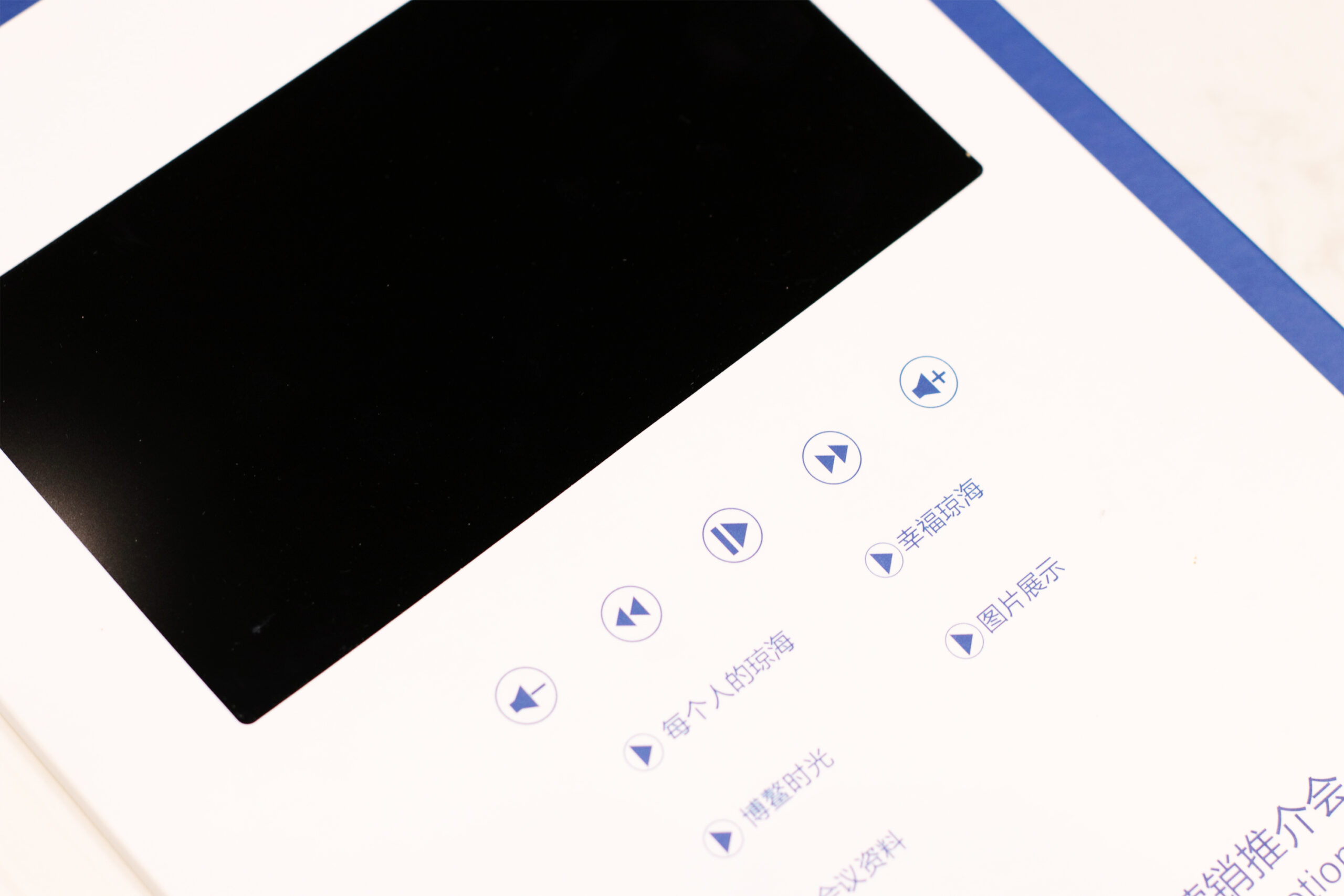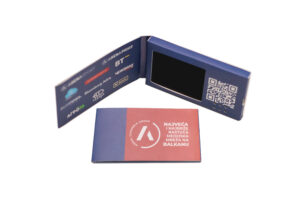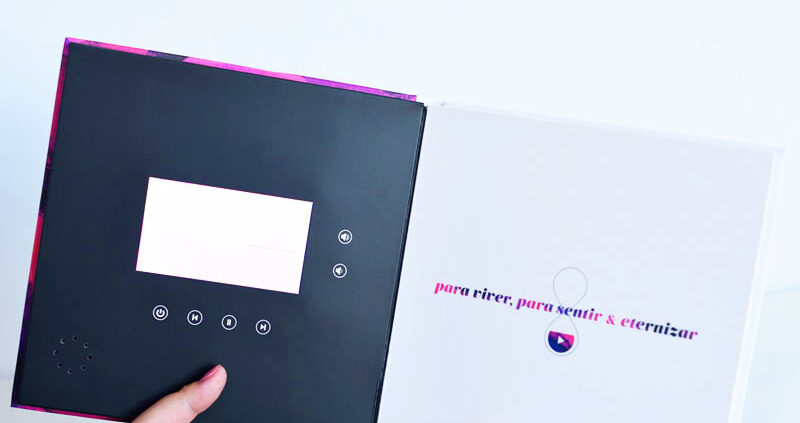Controversial Thesis
Video brochures—a fusion of print’s tangibility and digital interactivity—are hailed as the future of B2B marketing. Yet in the EU, their evolution faces a critical juncture: Can hybrid media thrive amid tightening sustainability mandates and GDPR constraints, or will hardware dependency and regulatory friction stifle adoption?
I. Sustainability vs. Hardware Reliance: A Self-Defeating Cycle?
Data-Driven Irony: While Statista reports a 21% decline in EU print advertising revenue (2024), video brochures paradoxically inherit print’s environmental baggage. Each unit requires lithium batteries, plastic casings, and rare-earth minerals—components at odds with the EU’s Circular Economy Action Plan. LVMH’s 2023 campaign, which deployed 50,000 video brochures for product launches, reduced paper waste by 37% but increased e-waste by 19%. This trade-off mirrors the electric vehicle boom in Germany, where charging infrastructure expansion (39% YoY growth in 2024) fails to offset mining-related ecological damage.
Critical Angle: Does the carbon footprint of hardware production negate video brochures’ green marketing appeal? Hybrid media’s scalability hinges on recyclable tech—a gap most vendors ignore.
II. GDPR’s Silent Stranglehold on Data-Driven Engagement
The Compliance Trap: Video brochures collect user analytics via NFC or QR codes, but GDPR’s “right to be forgotten”.210 complicates data retention. For example, a German industrial supplier reported 32% lower lead conversion rates after deleting user scans upon request, crippling post-campaign analysis10. Contrast this with China, where lax data laws enable Alibaba to track brochure interactions for 12+ months, refining AI-driven personalization.
Provocative Insight: Is GDPR’s privacy-first ethos incompatible with hybrid media’s value proposition? While EU brands tout “ethical engagement,” their Asian competitors leverage data fluidity to dominate ROI metrics.
III. EU vs. China: Divergent Paths in Hybrid Media Adoption
Technological Sovereignty Clash:
-
EU: Hardware-centric innovation (e.g., solar-powered screens) prioritizes durability but raises costs—German-made units are 2.3x pricier than Chinese counterparts.
-
China: Software-driven models (e.g., cloud-based content updates) reduce hardware turnover. ByteDance’s 2024 campaign used QR-code stickers on recycled paper, cutting costs by 58% while achieving 41% higher scan rates.
Strategic Tension: The EU’s fixation on “high-value” hybrid media risks ceding the mass market to agile Asian players.
IV. Future Scenarios: 3 Pathways for 2030
-
Collapse: Stricter eco-regulations (e.g., proposed EU battery passport rules) and GDPR fines (like Apple’s €500M DMA penalty) could render video brochures financially untenable.
-
Adaptation: Shift to “hardware-as-a-service” leasing models (e.g., Philips’ circular lighting) to offset e-waste liabilities.
-
Disruption: AI-powered “virtual brochures” using AR glasses—bypassing physical hardware entirely. Meta’s GDPR fines for data misuse suggest this path remains legally fraught.
Conclusion: A Fork in the Road
Video brochures symbolize Europe’s struggle to balance innovation with sustainability and privacy. Yet without reconciling hardware’s environmental toll and GDPR’s data straitjacket, hybrid media may become a transitional relic—not a transformative force. As LVMH’s CMO quipped: “We can’t market sustainability by being unsustainable.”


